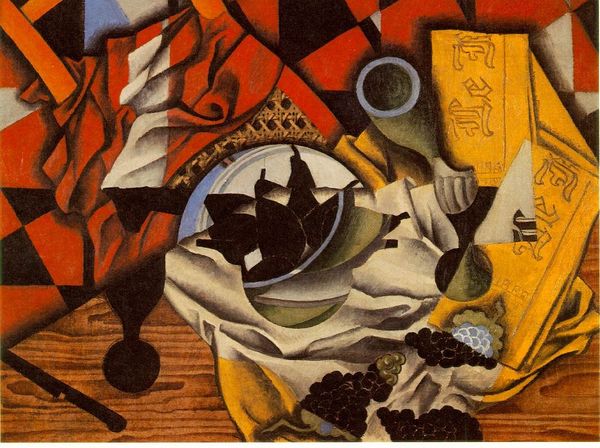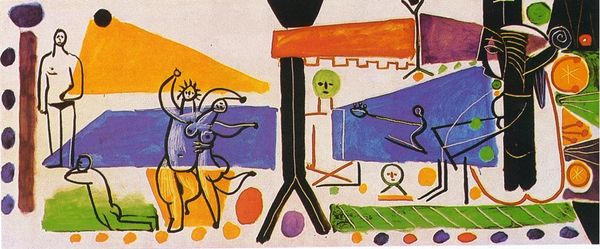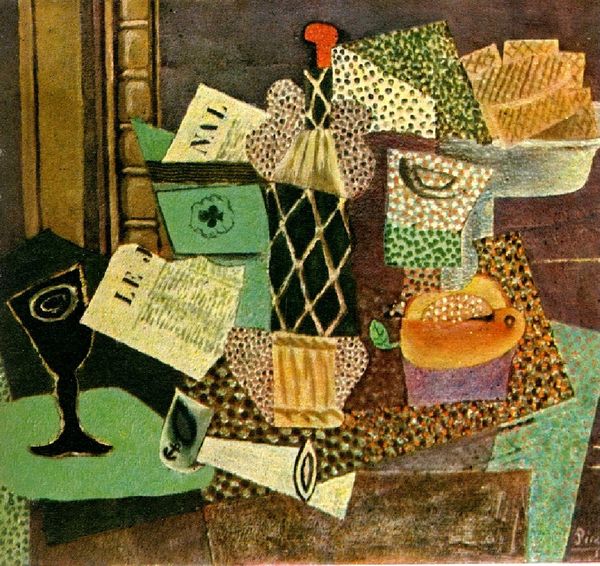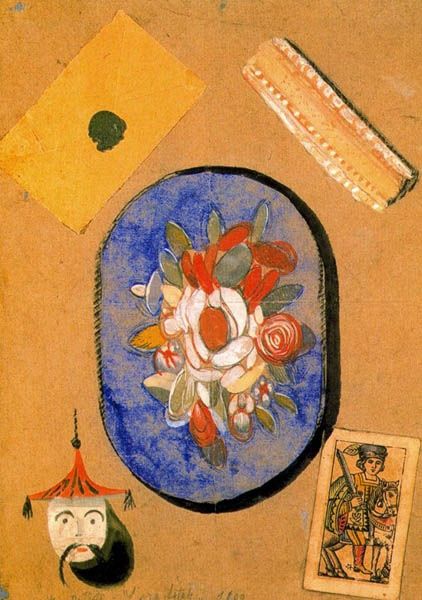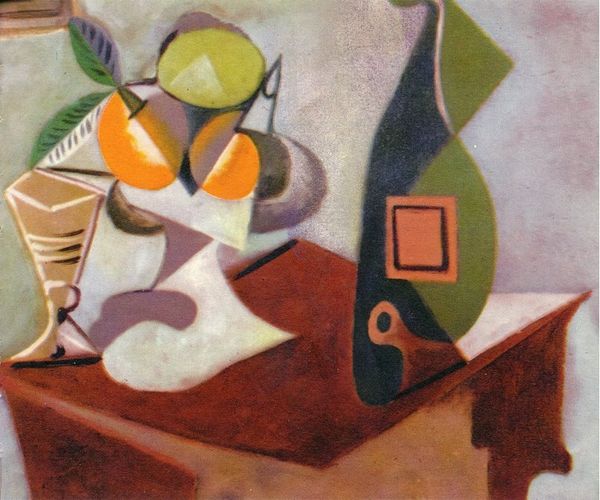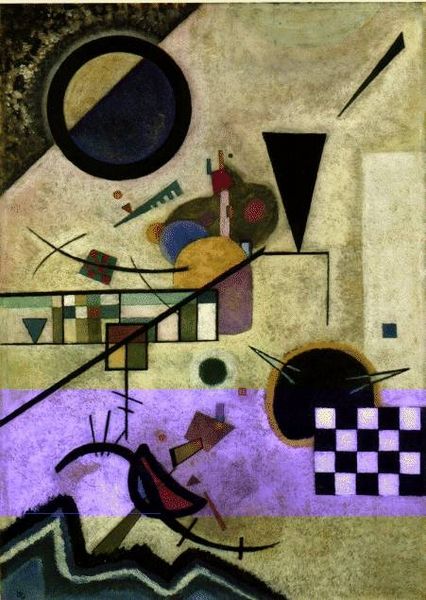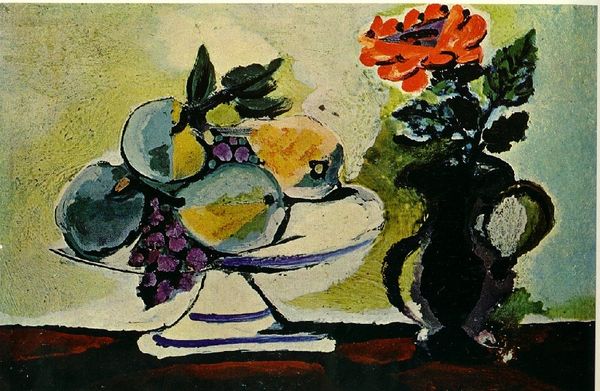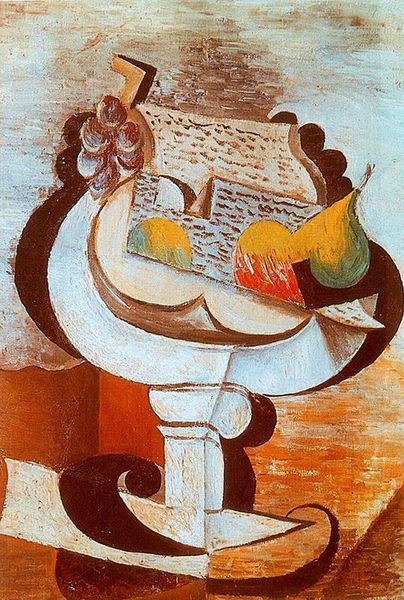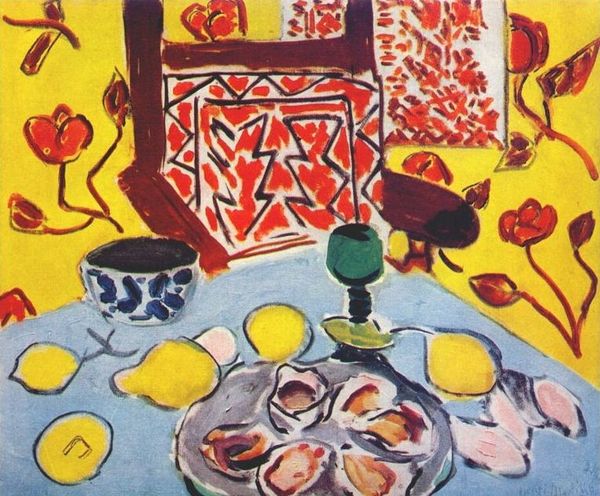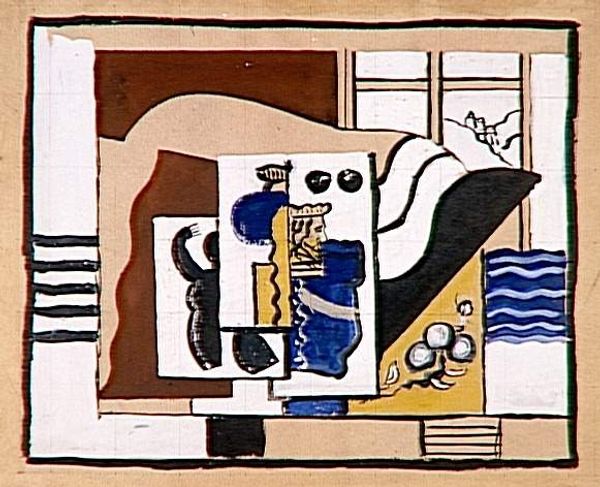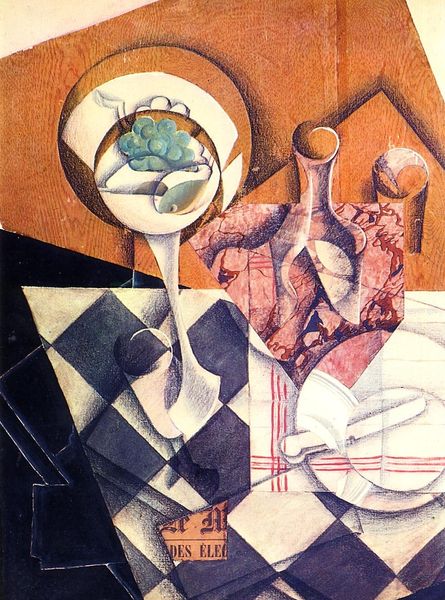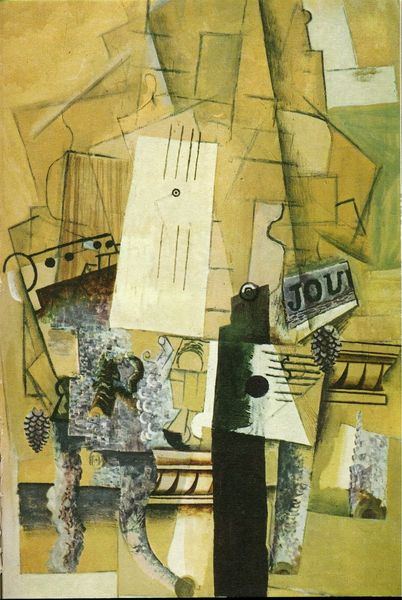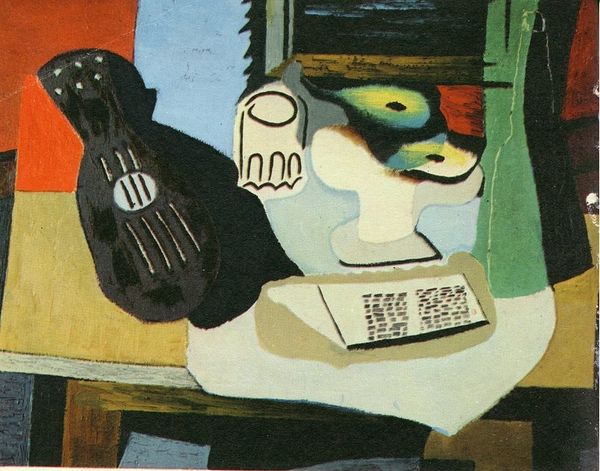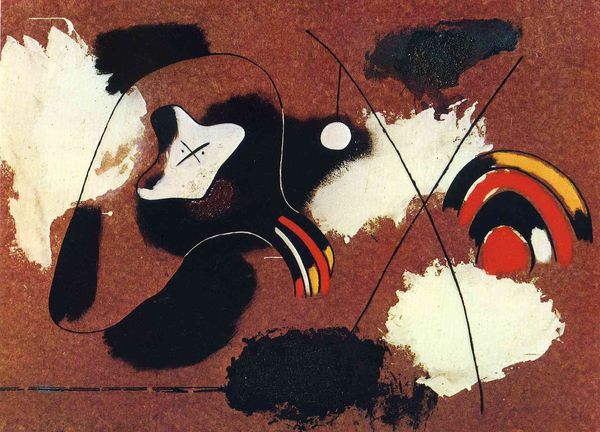
painting, oil-paint
#
cubism
#
painting
#
oil-paint
#
furniture
#
flower
#
acrylic on canvas
#
geometric
#
plant
#
naive art
#
modernism
Dimensions: 80 x 190 cm
Copyright: Pablo Picasso,Fair Use
Editor: So here we have Picasso's "Still Life on the Dresser" from 1955, rendered in oil paint. It strikes me as a surprisingly domestic scene for Picasso, a collection of everyday objects fractured and reassembled. What do you make of the materiality of these familiar items? Curator: Precisely. Note how Picasso renders these objects. He isn’t just representing them; he's constructing them from paint. The oil paint isn’t just a medium but becomes a substance. The flowers, the pitcher – their material existence is re-created through his labour. Does the texture of the oil paint influence your interpretation? Editor: Absolutely. There's a certain roughness, an almost tangible quality that contradicts the stillness of a still life. I was curious how it moves from reality to the abstraction; how is the materiality affected when he "cubifies" these ordinary things? Curator: He’s taking these objects, dissecting them into planes, and then reassembling them according to a different logic. Consider how mass-produced, ordinary materials become rarefied, even fetishized, through artistic labour. It encourages reflection on the division between everyday consumption and artistic production. Think of the relationship to a hand-made vessel as opposed to something mass produced. Do you see that at play here? Editor: Yes, I can see the connection there. It’s almost like he's elevating the mundane through the sheer act of making. It isn't just a dresser anymore, it's the representation *of* a dresser. It feels as if his process changes the dresser's social position in society. Curator: Exactly. Through material intervention, the artist mediates and reshapes our relationship with everyday life. That understanding deepens with insights into the material choices themselves, their application, and historical context. What would you take away as most interesting about his practice of making in "Still Life?" Editor: I think it's the way he transforms the mundane into something extraordinary through the very act of creation. It's the making, the process of the art, that gives it its power.
Comments
No comments
Be the first to comment and join the conversation on the ultimate creative platform.
